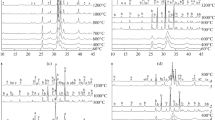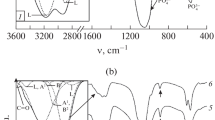Abstract.
Previous studies have shown that carbonated apatites with a range of carbonate contents and crystallinities exhibit the phenomenon of metastable equilibrium solubility (MES) distributions. The purpose of the present study was to investigate the solubility behavior of bone mineral using the concepts of MES and MES distributions and, together with crystallinity and chemical composition data, examine the similarity of bone mineral to carbonated apatite (CAP). Bone samples were harvested from 1-, 5-, and 8-month-old rats. The organic components of the bone samples were removed by hydrazine deproteination. Carbonated apatite was synthesized by the hydrolysis of dicalcium phosphate dihydrate (DCPD) in a NaHCO3-containing media at 50°C. The MES distributions of bone mineral and CAP were determined by equilibrating predetermined amounts of CAP or bone mineral in a series of 0.1 M acetate buffers containing calculated levels of calcium and phosphate and maintained at essentially constant pHs of 5.0, 5.3, 5.7, and 6.5. From the compositions of the equilibrating buffer solutions, ion activity products based upon the stoichiometries of octacalcium phosphate, hydroxyapatite, and carbonated apatite were calculated in an attempt to determine the function governing the dissolution of CAP and bone mineral. The results of this study demonstrated that the MES distribution phenomenon appeared to hold for bone mineral and that the changes in crystallinity of bone mineral with age correlated well with changes in the MES values. A CAP sample was prepared that was found to be an excellent synthetic prototype closely mimicking the physicochemical behavior of bone mineral from an 8-month-old rat. Another finding of this study was that the ion activity product function based upon the hydroxyapatite stoichiometry well described the MES results obtained with both CAP and bone mineral. The interpretation that a surface complex with hydroxyapatite stoichiometry governs the solubility behavior of bone mineral is, therefore, consistent with the experimental data. Other calcium phosphate stoichiometries for the surface complex showed systematic variations in the MES profiles when the pH of the equilibrating solution was varied.
Similar content being viewed by others
Author information
Authors and Affiliations
Additional information
Received: 30 October 1997 / Accepted: 1 October 1998
Rights and permissions
About this article
Cite this article
Baig, A., Fox, J., Wang, Z. et al. Metastable Equilibrium Solubility Behavior of Bone Mineral. Calcif Tissue Int 64, 329–339 (1999). https://doi.org/10.1007/s002239900628
Issue Date:
DOI: https://doi.org/10.1007/s002239900628




